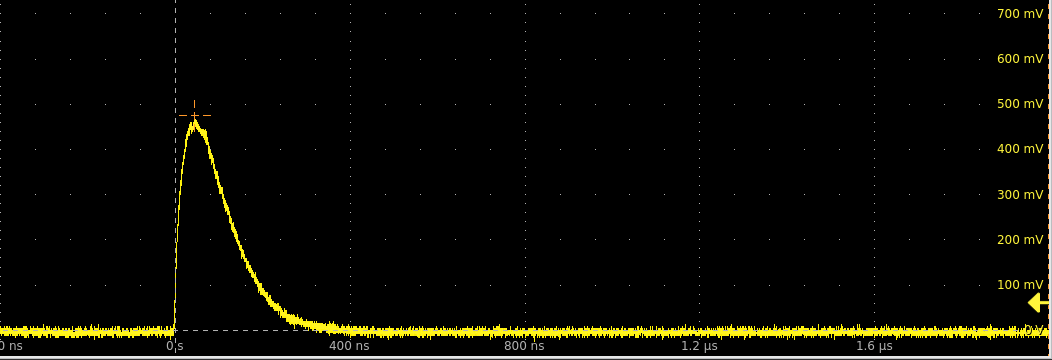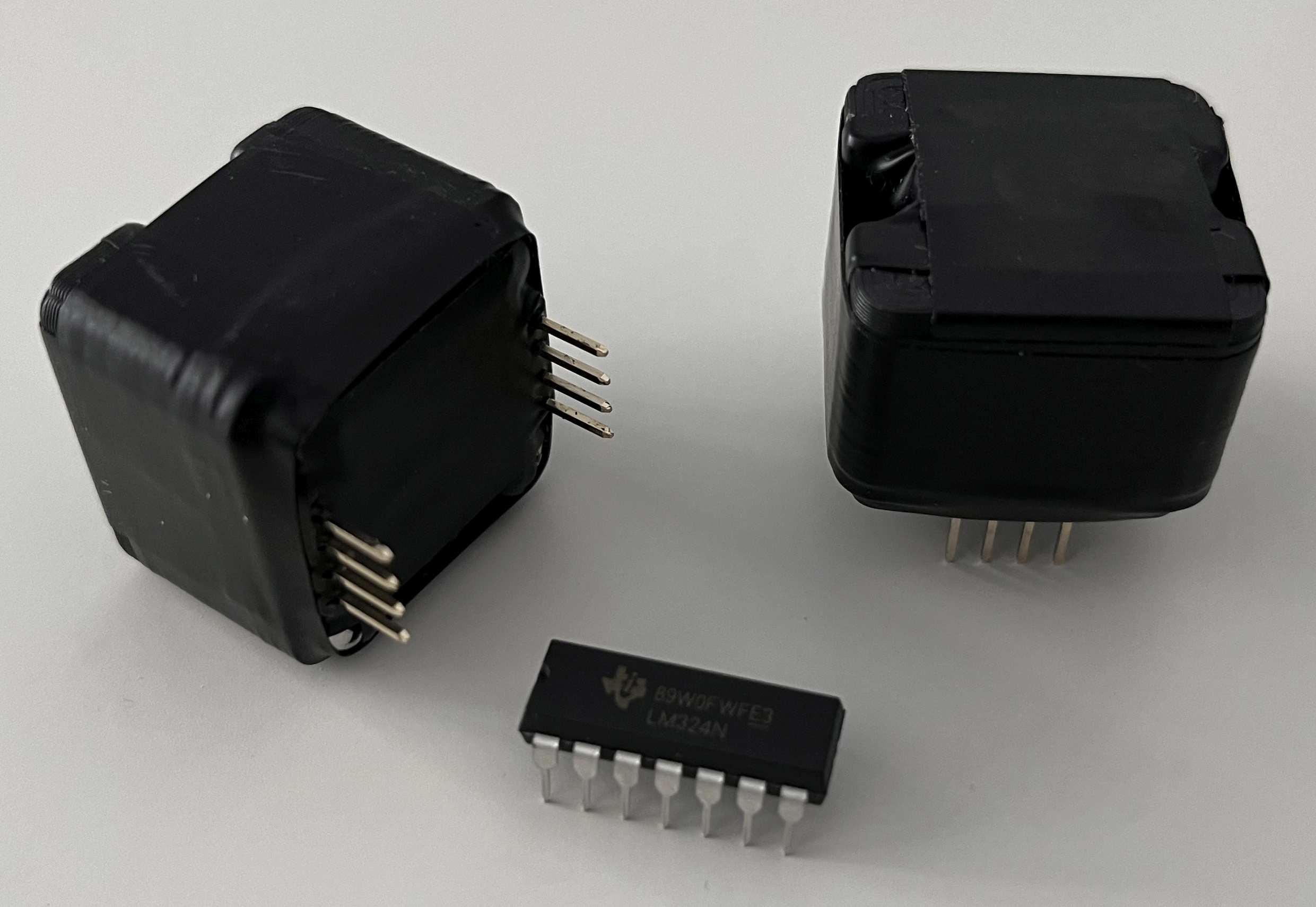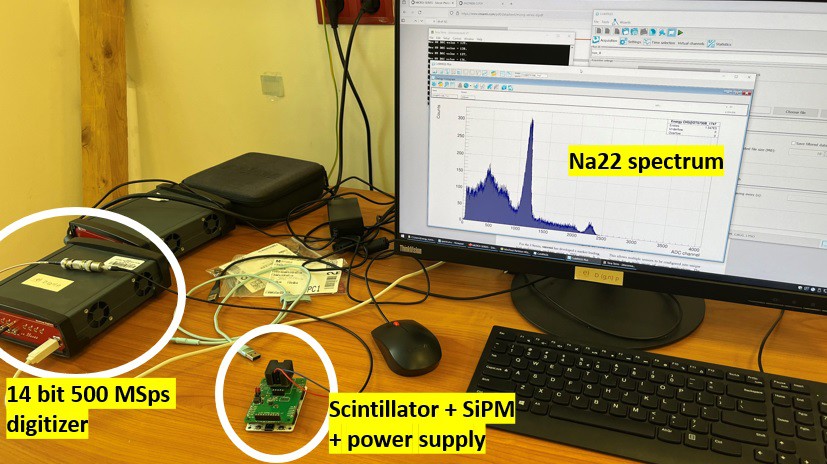Physics overview
To convert the small number of optical photons into an electric signal a photodiode is not ideal. Short of using a photomultiplier tube (PMT) the best option is a silicon photomultiplier (SiPM). These are arrays of thousands of cells, with each cell being sensitive to a single photon. When a photon is absorbed by a cell it supplies a small pulse of current. If more photons hit the same cell at the same time, you won’t see any difference – the cell either fired or it didn’t. But since scintillators produce such a small number of photons it’s very likely that each one will strike a different cell. All these small pulses of current are added up and you get a signal that is proportional to the number of cells that fired.

Each cell is a small photodiode that is built to be operated above its breakdown voltage. That makes them super unstable, and once a photon is absorbed, the diode breaks down generating that pulse of current. The cell has a series quenching resistor that causes the voltage across the cell to drop during breakdown ending the pulse and effectively resetting the cell.
Since cells are so unstable, they also fire randomly, due to thermally-generated carriers. This leads to a “dark count rate” of the order of millions of counts per second but as these pulses don’t overlap you only see them as an increased noise floor.
Detector assembly

To make the most out of the small number of scintillation photons the optical coupling between scintillator and SiPM has to be as good as possible. Changes in the index of refraction, as can be generated by small pockets of air at the interface between the two, can cause photons to be reflected away from the detector. This is only made worse if the optical contact is uneven across the detector surface. A common solution to this problem is optical grease, having a known index of refraction, that can be applied similarly to how thermal paste is used on CPUs to improve thermal conductivity.
Because of light leakage through the PCB I had to wrap the assembled detector in black electrical tape.
Pomelo
I used the Broadcom AFBR-S4N44P014M 4mm x 4mm (ish) SiPM since it’s fairly low-cost and comes in a reasonable package for soldering with a heat gun. It needs to be operated between 38V and 48V.
Testing the fully assembled detector (wrapped scintillator, case, SiPM, power supply) with a digitizer at work I could get a feel for the expected performance before I started agonizing over my own readout electronics.

 mihai.cuciuc
mihai.cuciuc
Discussions
Become a Hackaday.io Member
Create an account to leave a comment. Already have an account? Log In.